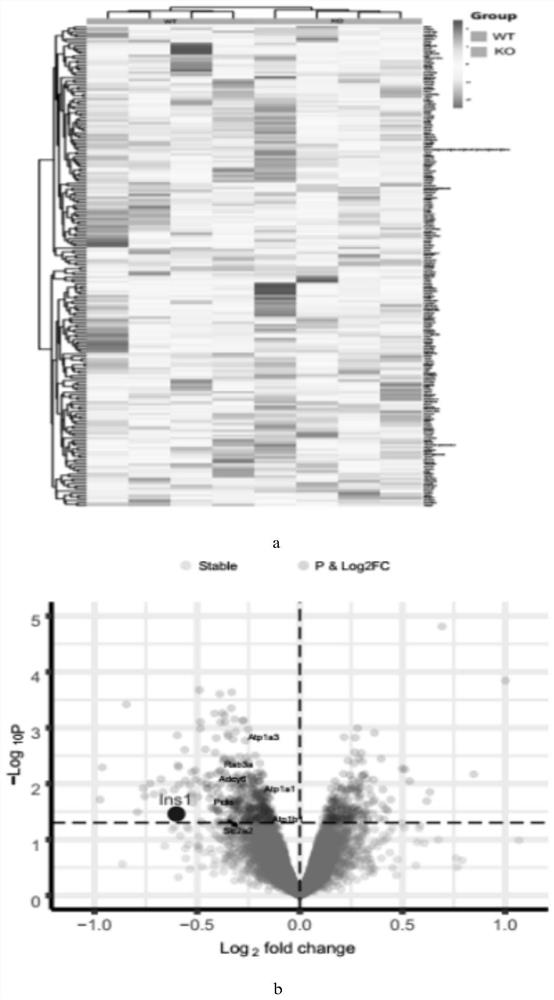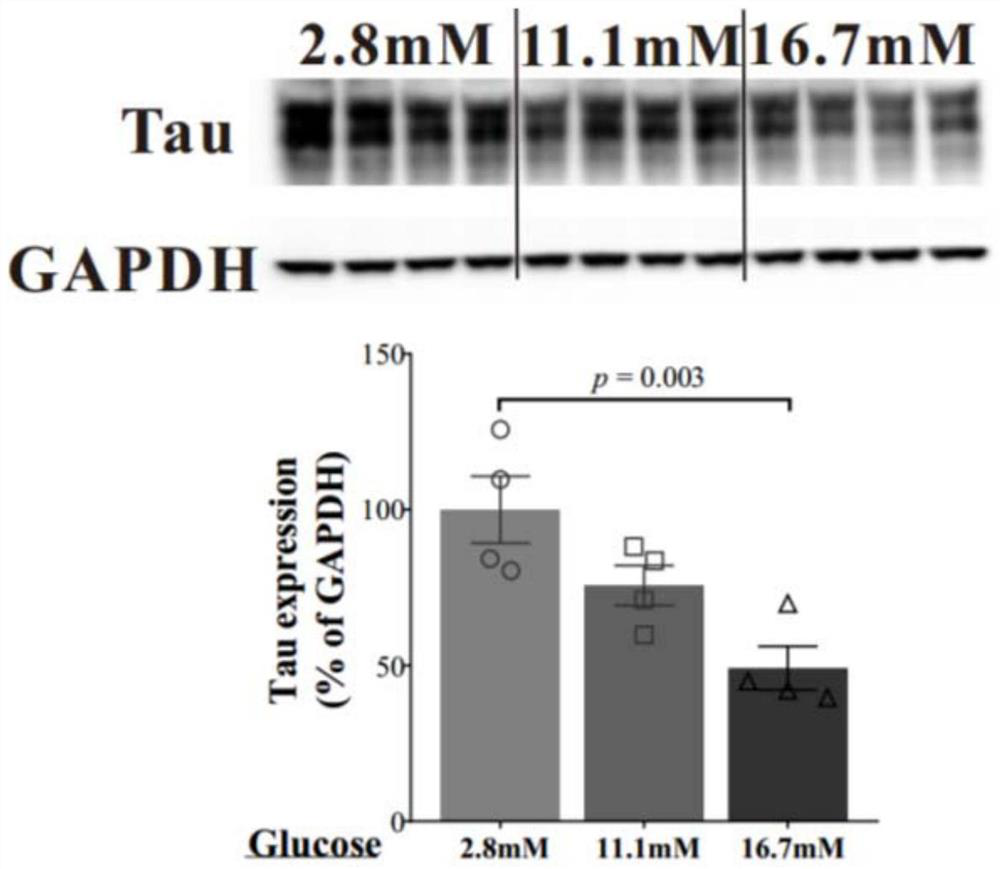Application of tau protein and genes thereof as drug targets in preparation of drugs for treating diabetes mellitus
A diabetes and protein technology, which is applied in the field of diabetes treatment, can solve the problems of few targets, affect the glucose metabolism system, and high risk of complications, and achieve the effect of promoting extracellular secretion and reducing blood sugar levels
- Summary
- Abstract
- Description
- Claims
- Application Information
AI Technical Summary
Problems solved by technology
Method used
Image
Examples
Embodiment 1
[0059] Quantitative proteomics analysis of islet cells INS-1(tau-KD) cells
[0060] Protein is the main bearer of life activities, and proteomics can study the expression level of all proteins and the interaction between proteins at the overall level. In order to explore the importance of tau protein in the process of insulin secretion from the overall protein level, the embodiment of the present invention constructed islet INS-1 (rat insulinoma cells) with reduced tau protein level for quantitative proteomic analysis (N=4) .
[0061] A total of 5933 proteins were quantified in the quantitative proteomics analysis. From the quantitative proteins, 100 up-regulated and down-regulated proteins with the largest fold difference were selected for overall protein expression heat map analysis. The heat map analysis showed that each replicate sample in the WT group and tau-KD group showed good uniformity, indicating that this The data has good repeatability and reliability, and can b...
Embodiment 2
[0063] Changes of tau protein level during insulin secretion
[0064] 2.1 The level of tau protein is down-regulated in a glucose-dependent manner in islet cells
[0065]In order to determine the change of tau protein level in the process of insulin secretion in vitro, this example utilizes different concentrations of glucose: low concentration (2.8mM), medium concentration (11.1mM) and high concentration (16.7mM) glucose to stimulate islet cell INS-1 (Rat islet cell tumor cells) were subjected to glucose-stimulated insulin secretion test (GSIS). After the GSIS experiment, Western Blot was used to detect the change of tau protein expression level in INS-1 cells. The experimental results showed that with the increase of glucose concentration, the expression level of tau protein was gradually down-regulated ( image 3 ). This phenomenon indicated that the level of tau protein changed during the insulin secretion process of islet cells, suggesting that tau protein may be invol...
Embodiment 3
[0069] Effects of decreased tau protein level on insulin secretion and glucose tolerance
[0070] 3.1 The reduction of tau protein level increases the secretion of insulin in INS-1 cells
[0071] After confirming the significant change of tau protein level in the process of insulin secretion, this implementation uses the INS-1tau-KD islet cell model to explore the regulation of tau protein on insulin secretion. First, the reduction of tau protein level in INS-1 cells was verified by Western blot ( Figure 5 Middle a). INS-1 cells can secrete insulin under the stimulation of glucose, so in order to determine whether the reduction of tau protein level will affect the secretion of insulin in INS-1 cells, we conducted a glucose-stimulated insulin secretion experiment (GSIS) using INS-1tau-KD cells , GSIS results showed that, compared with WT group, INS-1(tau-KD) cells significantly increased insulin secretion under the stimulation of low-concentration glucose (2.8mm) and high-co...
PUM
 Login to View More
Login to View More Abstract
Description
Claims
Application Information
 Login to View More
Login to View More - R&D Engineer
- R&D Manager
- IP Professional
- Industry Leading Data Capabilities
- Powerful AI technology
- Patent DNA Extraction
Browse by: Latest US Patents, China's latest patents, Technical Efficacy Thesaurus, Application Domain, Technology Topic, Popular Technical Reports.
© 2024 PatSnap. All rights reserved.Legal|Privacy policy|Modern Slavery Act Transparency Statement|Sitemap|About US| Contact US: help@patsnap.com










